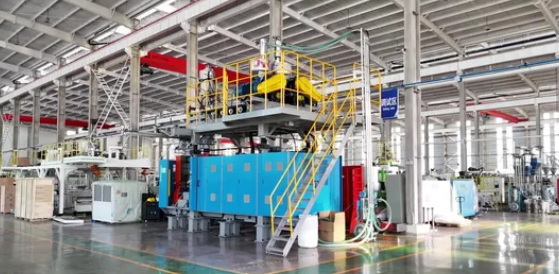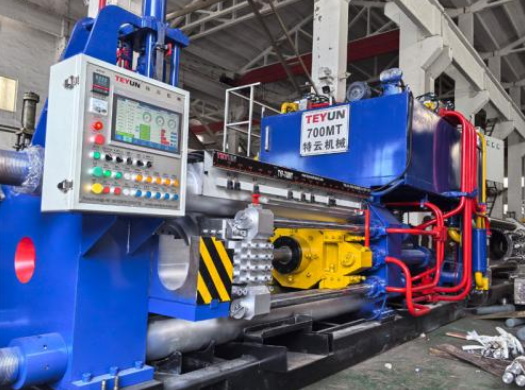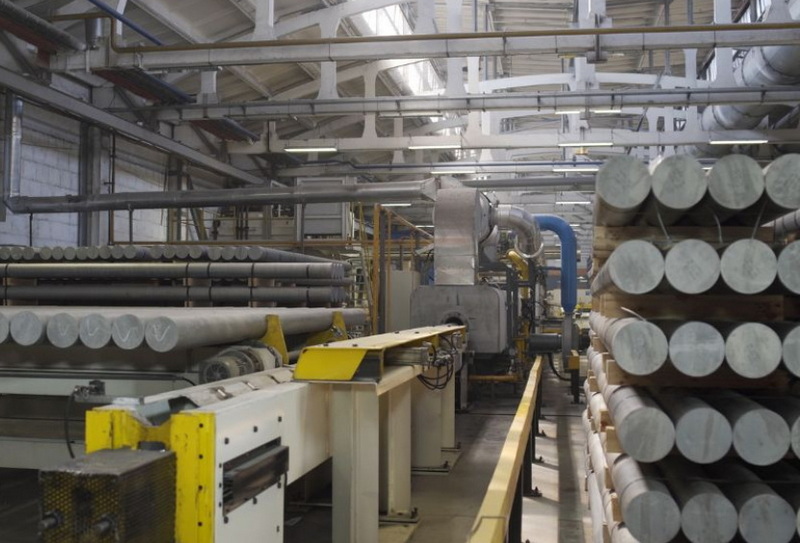Content Menu
● Understanding Twin Screw Extrusion Machinery
● Key Features of Twin Screw Extrusion Machinery That Enhance Production Efficiency
>> 1. Parallel Screw Design for Uniform Extrusion
>> 2. High Extrusion Speeds and Increased Throughput
>> 3. Superior Mixing and Plasticization Capabilities
>> 4. Precise Temperature and Process Control
>> 5. Flexibility to Process a Wide Range of Materials
>> 6. Energy Efficiency and Cost Savings
>> 7. Durable and Long-lasting Equipment
● How Twin Screw Extrusion Machinery Optimizes Production Efficiency
>> Increasing Screw Speed and Torque
>> Expanding Free Volume in Screw Grooves
>> Modular and Easy Maintenance Design
>> Continuous Innovation and Upgrades
● Benefits of Using Twin Screw Extrusion Machinery in Production
● Conclusion
● FAQ
>> 1. What makes twin screw extrusion machinery more efficient than single screw extruders?
>> 2. How does the twin screw design improve mixing and plasticization?
>> 3. Can twin screw extruders handle different types of materials?
>> 4. What role does temperature control play in twin screw extrusion?
>> 5. How do manufacturers improve the working efficiency of twin screw extruders?
● Citations:
Twin screw extrusion machinery has become a cornerstone technology in modern manufacturing, especially in the plastics and polymer industries. Its unique design and operational advantages have revolutionized production processes by significantly enhancing efficiency, product quality, and versatility. This article explores in depth how twin screw extrusion machinery improves production efficiency, examining its technical features, operational benefits, and the latest innovations that keep it at the forefront of extrusion technology.

Understanding Twin Screw Extrusion Machinery
Twin screw extrusion machinery consists of two intermeshing screws rotating inside a barrel. Unlike single screw extruders, the twin screws can be co-rotating or counter-rotating, and their design allows for superior mixing, conveying, and melting of raw materials. The parallel screw configuration creates a continuous and uniform flow of material, which is essential for high-quality extrusion.
The machinery is widely used in plastic compounding, food processing, pharmaceuticals, and chemical industries due to its ability to handle a broad range of materials and complex formulations.
Key Features of Twin Screw Extrusion Machinery That Enhance Production Efficiency
1. Parallel Screw Design for Uniform Extrusion
The twin screw extrusion machinery employs two screws working in tandem, which ensures a more uniform extrusion process compared to single screw extruders. This design facilitates consistent melting and mixing of raw materials, resulting in higher product quality and fewer defects. The uniform material flow also enables higher throughput and reduces waste[1][2].
2. High Extrusion Speeds and Increased Throughput
Twin screw extruders can operate at higher screw speeds, which directly translates to increased production capacity. The dual screws provide a larger surface area for melting and conveying materials, allowing manufacturers to produce more products in less time. This higher throughput is crucial for meeting large-scale production demands and reducing cycle times[1][2][5].
3. Superior Mixing and Plasticization Capabilities
The intermeshing screws create a self-wiping action that enhances mixing efficiency. This ensures additives, fillers, and colorants are evenly dispersed throughout the polymer matrix, producing homogeneous melts. Improved plasticization reduces raw material waste and enhances the physical properties of the final product[2][3][5].
4. Precise Temperature and Process Control
Twin screw extrusion machinery is equipped with advanced control systems that allow independent regulation of temperature, pressure, and screw speed along the barrel. This precision control is vital for processing diverse materials with varying thermal and rheological properties, ensuring consistent product quality and minimizing material degradation[1][2][5].
5. Flexibility to Process a Wide Range of Materials
The flexible design of twin screw extruders enables them to handle thermoplastics, thermosets, composites, and recycled materials. This adaptability allows manufacturers to switch between different raw materials without extensive equipment changes, reducing downtime and improving overall production efficiency[1][2][3][5].
6. Energy Efficiency and Cost Savings
The self-wiping action of the screws reduces friction and material buildup, which lowers energy consumption. Additionally, the efficient mixing and shorter processing times contribute to significant energy savings. These features make twin screw extrusion machinery an environmentally friendly and cost-effective choice for manufacturers[2][3].
7. Durable and Long-lasting Equipment
Twin screw extruders distribute mechanical loads between two screws, reducing wear and tear compared to single screw machines. This durability translates into longer service life, less maintenance downtime, and sustained production efficiency over time[5].

How Twin Screw Extrusion Machinery Optimizes Production Efficiency
Increasing Screw Speed and Torque
Raising the screw speed increases throughput but can reduce the residence time of materials, potentially affecting plasticization quality. To counter this, manufacturers increase the screw length and groove depth, allowing for higher conveying capacity and better plasticization without compromising product quality. This requires the extruder to handle higher torque and power, which modern twin screw machines are designed to withstand[4][6][7].
Expanding Free Volume in Screw Grooves
Increasing the free volume in the feeding and devolatilization sections of the screws improves material intake and processing capacity, especially for low-density or loose materials. This design optimization enhances the consumption efficiency of raw materials and contributes to higher production rates[6][7].
Modular and Easy Maintenance Design
Optimized twin screw extruders feature modular barrels and screws that are easy to disassemble and maintain. This reduces downtime during maintenance and allows for quick replacement or adjustment of parts to suit different production needs. The convenience of maintenance supports continuous production and reduces unnecessary waste caused by equipment failure[8].
Continuous Innovation and Upgrades
Manufacturers of twin screw extrusion machinery invest heavily in research and development to improve machine performance. Innovations include better gearbox designs for increased torque, advanced control systems for precise parameter adjustments, and improved screw geometries for enhanced mixing and conveying. These advancements ensure that twin screw extruders remain efficient and competitive in evolving markets[1][4][6].
Benefits of Using Twin Screw Extrusion Machinery in Production
- Higher Productivity: Increased throughput and faster production cycles.
- Improved Product Quality: Uniform mixing and precise control reduce defects.
- Material Versatility: Ability to process a wide range of polymers and composites.
- Reduced Waste: Efficient plasticization minimizes raw material loss.
- Energy Savings: Lower friction and optimized processing reduce energy consumption.
- Lower Maintenance Costs: Durable components and easy maintenance design.
- Flexibility: Quick adaptation to new materials and formulations.
Conclusion
Twin screw extrusion machinery significantly improves production efficiency through its advanced design and operational features. The parallel screw configuration, high extrusion speeds, superior mixing capabilities, and precise control systems enable manufacturers to achieve higher throughput, better product quality, and greater flexibility in processing materials. Continuous innovation in twin screw extruder technology further enhances these benefits, making it an indispensable tool for modern manufacturing industries. By investing in twin screw extrusion machinery, businesses can optimize their production processes, reduce costs, and maintain a competitive edge in the market.

FAQ
1. What makes twin screw extrusion machinery more efficient than single screw extruders?
Twin screw extrusion machinery offers better mixing, higher throughput, and more precise control due to its dual intermeshing screws. This results in uniform material flow, improved product quality, and increased production speeds compared to single screw extruders[1][2][5].
2. How does the twin screw design improve mixing and plasticization?
The intermeshing screws create a self-wiping action that continuously cleans the screw surfaces and promotes thorough mixing of additives and fillers. This ensures a homogeneous melt and efficient plasticization, reducing defects and raw material waste[2][3][5].
3. Can twin screw extruders handle different types of materials?
Yes, twin screw extruders are highly versatile and can process a wide range of materials including thermoplastics, thermosets, composites, and recycled polymers. Their flexible design allows for quick adaptation to different raw materials without extensive equipment changes[1][2][3][5].
4. What role does temperature control play in twin screw extrusion?
Precise temperature control along the extruder barrel is critical to prevent thermal degradation and achieve desired melt properties. Twin screw extruders feature modular barrel designs that allow independent temperature zones, ensuring consistent quality and minimizing waste[1][2][5].
5. How do manufacturers improve the working efficiency of twin screw extruders?
Manufacturers improve efficiency by increasing screw speed, expanding screw groove depth and free volume, enhancing plasticization and mixing capabilities, and upgrading gearbox designs to handle higher torque. These measures increase throughput while maintaining product quality[4][6][7].
Citations:
[1] http://en.exintell.cn/news/2023/52.html
[2] https://www.kailidaextrusion.com/the-advantages-of-twin-screw-extruders-in-the-plastic-industry/
[3] https://daiaplastic.com/twin-screw-extruder-in-plastic-production/
[4] https://www.superiorscrew.com/how-to-optimize-the-production-efficiency-and-product-quality-of-twin-screw-extruders/
[5] https://www.monomex.com/en/twin-screw-extruders/mex-t-pro
[6] https://www.haisiextrusion.com/There-Are-Higher-Requirements-for-The-Production-Efficiency-And-Product-Quality-of-Twin-screw-Extruders-Where-Can-We-Start-To-Optimize-Them-id42617356.html
[7] https://www.keyatwinscrew.com/methods-to-improve-the-working-efficiency-of-twin-screw-extruder.html
[8] https://www.won-plus.com/blog/what-is-a-twin-screw-extruder-the-advantages-of-twin-screw-extruder_b23
[9] https://www.keyatwinscrew.com/twin-screw-extruder-key-to-improving-production-efficiency.html
[10] https://www.cowinextrusion.com/how-to-improve-the-extruding-efficiency-and-quality-of-screw-extruder/
[11] https://onlytrainings.com/twin-screw-extrusion-how-to-achieve-cost-effective-highest-performance
[12] https://www.gsextruder.com/advantages-of-twin-screw-extruder-machine/
[13] https://onlytrainings.com/twin-screw-extrusion-how-to-achieve-cost-effective-highest-performance-od/Mark_DeMEUSE?limit=6
[14] https://www.fangliextru.com/news-show-1069154.html
[15] https://www.keyatwinscrew.com/advantages-and-applications-of-twinscrew-extruder.html
[16] https://www.haisiextrusion.com/What-Are-The-Differences-in-Process-And-Production-Efficiency-for-Different-Models-of-Twin-Screw-Extruders-id40912616.html
[17] https://www.blessonextrusion.com/twin-screw-extruder/
[18] https://www.lesunscrew.com/advantages-of-twin-screw-extruder.html
[19] https://www.cowellextrusion.com/how-does-a-twin-screw-extruder-work/
[20] https://www.benkextruder.com/performance-advantages-of-twin-screw-extruder/






















